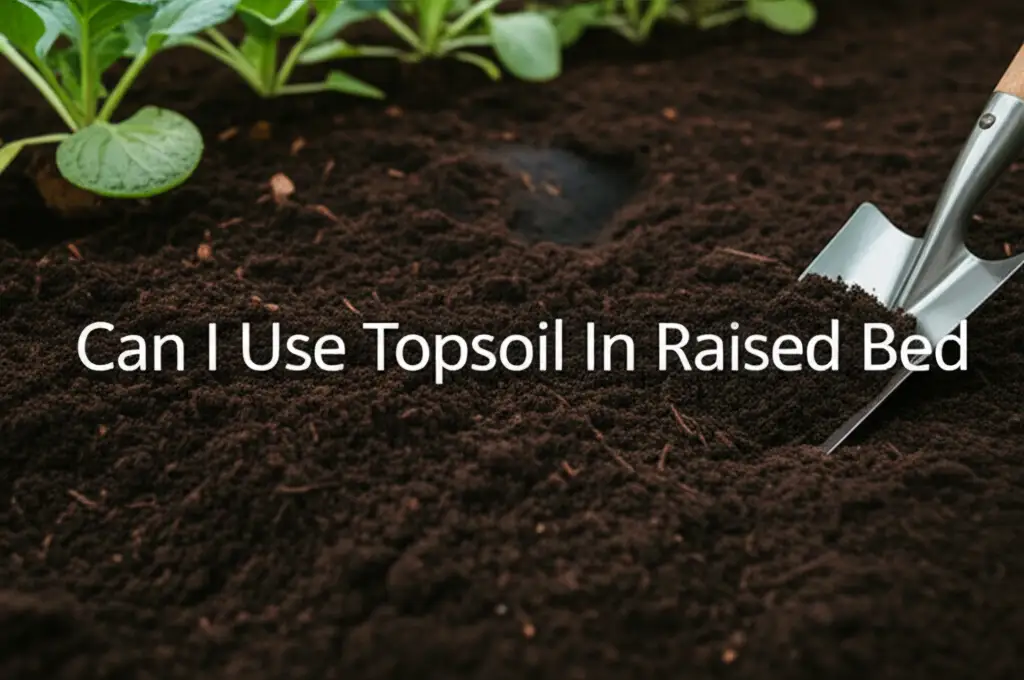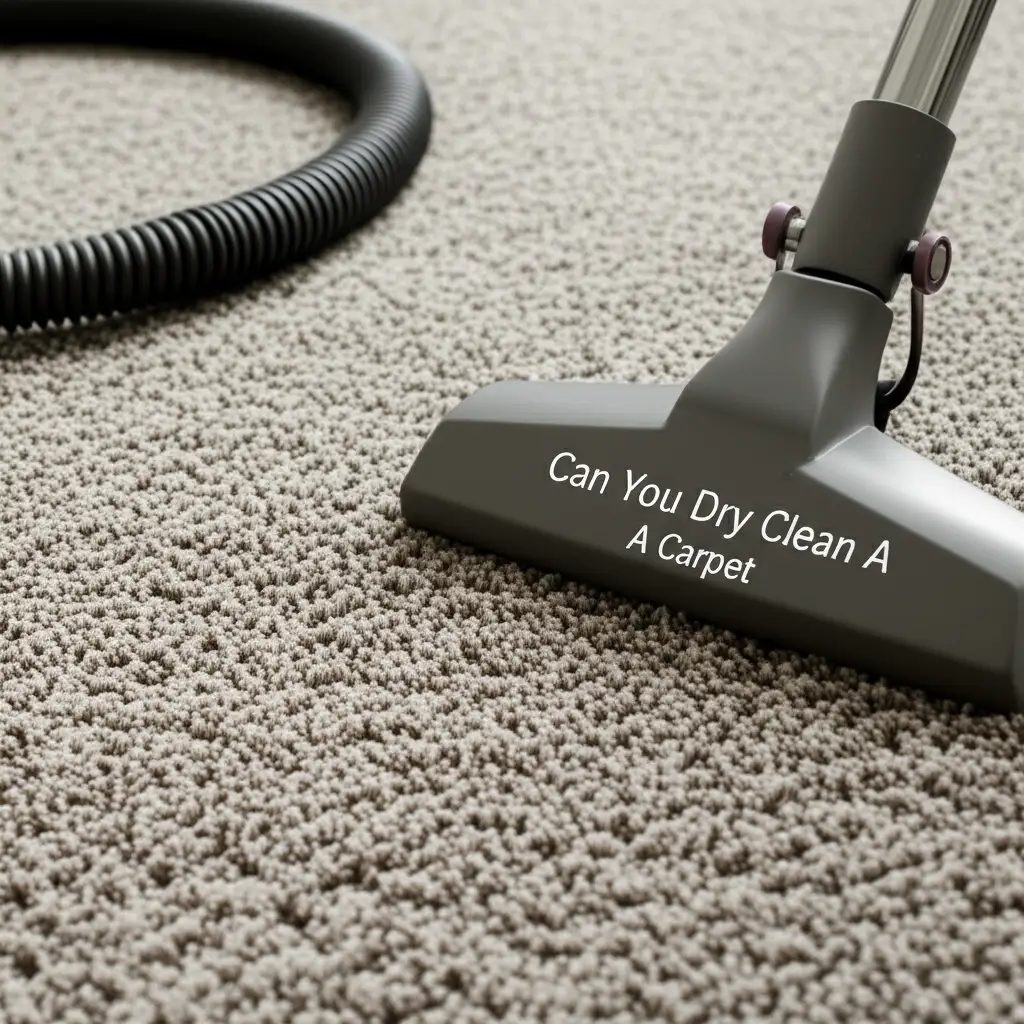· Liora Benning · Gardening · 17 min read
Can I Use Topsoil In Raised Bed

Can You Use Topsoil in Your Raised Garden Bed?
Building a raised garden bed brings joy. You get to grow your own vegetables, flowers, or herbs. A big question comes up: “Can I use topsoil in my raised bed?” Many gardeners ask this question. It seems like an easy answer, but it is not. The success of your garden depends on the soil. Knowing what soil to use is very important. This guide will help you understand topsoil. It will also show you how to make the best soil mix for a healthy garden.
Takeaway
- Topsoil alone is usually not enough for raised beds.
- Topsoil can compact easily and may lack nutrients.
- Always mix topsoil with compost and other amendments.
- A good soil mix promotes drainage and root growth.
- Start with quality ingredients for a thriving garden.
Yes, you can use topsoil in a raised bed, but it should not be the only type of soil. Topsoil often needs mixing with other materials. This improves its structure, drainage, and nutrient content. A blend creates the best environment for plants to grow well.
Understanding Topsoil: What It Is and How It Differs
Topsoil is the uppermost layer of earth. It is where plants mostly grow in natural settings. This soil is rich in organic matter. It also contains microbes and nutrients. However, not all topsoil is the same. Quality varies greatly by region.
When you buy topsoil, it might come from many places. It could be from construction sites or new developments. This means its quality can be unknown. It might have weed seeds. It could also have poor drainage properties. Understanding these differences is important. Good topsoil feels crumbly. It does not clump together.
What Makes Topsoil Unique?
Topsoil has many living organisms. These organisms help break down organic material. They make nutrients available to plants. It also holds water well. But it can become very dense when confined. This density can block plant roots. It also limits air flow. Good air flow is important for root health.
Why Quality Matters
Poor quality topsoil can harm your plants. It might have too much clay. It could have too much sand. Clay makes soil heavy and poorly drained. Sand makes soil drain too fast. Neither is good on its own. Always check the source of your topsoil. Ask about its composition. This helps you know what you are buying.
The Pros and Cons of Using Topsoil in Raised Beds
Using topsoil in your raised garden bed has both good and bad points. It is important to know these before you start filling your bed. Understanding them helps you make good choices. This also helps you avoid common gardening problems.
Advantages of Topsoil
One major benefit of topsoil is its cost. It is usually cheaper than specialized potting mixes. You can buy it in large amounts. This makes it a cost-effective choice for filling big raised beds. Topsoil also provides a good base. It gives volume to your raised bed. It can hold some moisture and nutrients naturally. If you get good quality topsoil, it can be a good starting point. Some topsoils are rich in native microbes. These microbes help create a living soil system.
Disadvantages of Topsoil
The main problem with using only topsoil is its tendency to compact. In a raised bed, soil does not get natural aeration from worms or deep roots. It also does not get worked by farming equipment. This can make plain topsoil become very dense. Dense soil is bad for plant roots. Roots need air to grow well. Compacted soil also drains poorly. This can lead to root rot.
Another issue is nutrient content. While topsoil has some nutrients, it might not have enough for hungry plants. These nutrients can also wash away over time. Topsoil can also contain weed seeds. You might end up battling unwanted plants. Sometimes, topsoil can have diseases or pests. This means more work for you. Always consider these points before using topsoil as your sole filling.
Optimal Soil Mix for Raised Beds: Beyond Just Topsoil
Filling a raised bed needs more than just topsoil. You want a mix that stays loose and drains well. It must also have plenty of nutrients. This mix helps your plants thrive for many years. Think of it as making a special recipe for your garden. Each ingredient plays a vital role in plant health.
The Ideal Raised Bed Recipe
A good rule of thumb is to use a blend. Aim for about 50-60% good quality topsoil. Then, add 30-40% compost. Finally, include 10-20% other amendments. This combination gives your plants everything they need. It prevents compaction. It also makes sure nutrients are always available.
Essential Components to Add
- Compost: This is key. Compost adds rich organic matter. It improves soil structure. It also provides a slow release of nutrients. Use finished compost from kitchen scraps, yard waste, or a commercial source. Compost is like gold for your garden.
- Perlite or Vermiculite: These materials make the soil lighter. They improve drainage. They also help the soil hold air. Perlite is volcanic glass; it is very light. Vermiculite is a mineral; it holds water well. Both are excellent for raised beds.
- Aged Manure: If available, aged manure is a fantastic amendment. It adds a powerful boost of nutrients. Make sure it is well-rotted to avoid burning plants. Fresh manure is too strong.
- Peat Moss (use sparingly): Peat moss improves water retention. It also makes the soil more acidic. Use it in small amounts, or choose alternatives like coco coir. Coco coir is a more sustainable option. It works similarly to peat moss.
By mixing these ingredients, you create a perfect home for roots. The soil stays fluffy. Water drains well. Nutrients are always there for your plants. A good soil mix means healthier, more productive plants. Just like you might clean and organize your home for optimal living, such as how to clean the refrigerator for fresh food, preparing your raised bed soil creates a fresh and healthy environment for your plants.
How to Prepare and Amend Topsoil for Raised Bed Use
Simply dumping topsoil into your raised bed is not enough. You must prepare and amend it. This step ensures your plants get the best start. Proper preparation prevents problems later on. It also saves you work in the long run.
Assessing Your Topsoil
First, look closely at your topsoil. Is it heavy and clumpy? Does it feel gritty? Does it have a strange smell? These signs tell you about its quality. A quick test involves squeezing a handful of damp soil. If it forms a tight ball, it has a lot of clay. If it falls apart quickly, it might have too much sand. Ideal topsoil forms a loose ball that breaks apart easily.
Steps to Amend Topsoil
- Break Up Clumps: If your topsoil has large clumps, break them up. A shovel or a garden fork works well. This creates a more uniform texture.
- Add Organic Matter: This is the most important step. Mix in plenty of compost. Aim for at least a 1:1 ratio with your topsoil. If your topsoil is very poor, use even more compost. This improves drainage, aeration, and fertility.
- Incorporate Drainage Aids: Mix in perlite or vermiculite. These materials lighten the soil. They create air pockets. This prevents compaction. They also help with water movement. Use about 10-20% of your total mix.
- Boost Nutrients (Optional but Recommended): Add some aged manure or a slow-release organic fertilizer. This gives your plants an initial nutrient boost. Always follow product instructions for fertilizers. You can also add rock dust for minerals.
- Mix Thoroughly: Blend all components well. Use a shovel or a tarp. Spread the topsoil on a tarp. Then, add your amendments. Fold the tarp to mix. This ensures an even distribution of materials. A well-mixed soil is a happy soil.
Taking the time to prepare your topsoil pays off. Your plants will thank you with strong growth and abundant yields.
Layering Techniques for Filling Your Raised Bed
Filling a raised bed effectively means more than just pouring in soil. Many gardeners use layering techniques. These methods reduce the amount of expensive soil mix needed. They also provide long-term fertility and drainage. This approach is smart and sustainable.
The “Lasagna Gardening” Method
This popular method builds layers of organic materials. It mimics how soil forms in nature. The bottom layers break down over time. They provide nutrients to the plants above. This method is great for deep raised beds.
- Bottom Layer (Coarse Material): Start with twigs, small logs, or wood chips. These materials provide excellent drainage. They also break down slowly. This creates a long-term nutrient source.
- Middle Layers (Green and Brown): Alternate layers of “brown” materials and “green” materials. Brown materials include dry leaves, straw, or shredded cardboard. Green materials include grass clippings, kitchen scraps, or fresh manure. Make these layers 4-6 inches thick.
- Top Layer (Rich Soil Mix): Finish with at least 6-12 inches of your premium soil mix. This is the layer where your plants will grow. Make sure this top layer is rich in compost.
This layering method uses less purchased soil. It also recycles organic waste. It creates a very fertile growing environment.
Hugelkultur for Raised Beds
Hugelkultur is a German term meaning “hill culture.” It is a layering method using large woody debris. This technique is excellent for very deep raised beds. It provides slow-release nutrients and water.
- Core Layer: Place large logs or branches at the very bottom. These decompose slowly. They release nutrients over many years. They also create air pockets for drainage.
- Smaller Debris: Add smaller sticks and twigs next.
- Inverted Sod/Grass Clippings: Place sod grass-side down or add fresh grass clippings. These are rich in nitrogen.
- Brown and Green Layers: Continue with layers of leaves, straw, and kitchen scraps.
- Topsoil Mix: Cap it off with your prepared topsoil blend.
Hugelkultur beds hold moisture well. They also warm up quickly in spring. These beds need less watering. They are a good choice for busy gardeners. Just like you might keep your outdoor spaces clean and inviting by cleaning plastic patio furniture, these layering techniques ensure your raised bed stays productive and healthy.
Common Mistakes to Avoid When Using Topsoil in Raised Beds
Using topsoil in your raised beds can be tricky. Many new gardeners make common mistakes. Avoiding these errors saves you time, effort, and disappointment. Learning from others’ experiences is smart.
Relying Solely on Topsoil
The biggest mistake is using only topsoil. As we discussed, topsoil often compacts. It also may lack vital nutrients. Your plants will struggle to grow roots. They will not get enough air. This leads to stunted growth. They may even die. Always blend your topsoil with organic matter and drainage aids. Do not skip this step.
Not Testing Your Soil
Some people just buy topsoil and assume it is good. This is a gamble. Topsoil quality varies hugely. It can be too acidic or too alkaline. It might contain too much clay or sand. It could even have contaminants. A simple soil test kit helps a lot. It tells you about pH and nutrient levels. This information helps you choose the right amendments. You can buy kits at garden centers.
Poor Drainage Implementation
Raised beds need good drainage. If water sits in the soil, roots can rot. Some topsoils drain poorly on their own. If you do not add perlite or create layers, water can get trapped. Ensure your raised bed has holes at the bottom. Also, mix in plenty of coarse materials like compost or perlite. This makes water flow freely.
Neglecting Initial Nutrient Amendments
Even good topsoil may not have enough nutrients for a full season of growth. Plants in raised beds are often “heavy feeders.” They need a lot of food. If you just use topsoil, plants will quickly use up available nutrients. This leads to yellow leaves or poor yields. Always add plenty of compost. Consider slow-release organic fertilizers at the start.
Introducing Weed Seeds or Pests
Some bulk topsoil can come with unwanted guests. These include weed seeds, pests, or even plant diseases. This can turn your garden into a battleground. Ask your supplier about the source of their topsoil. Check for signs of weeds or pests before buying. If possible, consider sterilizing questionable topsoil, though this is difficult for large amounts. Good quality compost helps, as the composting process kills many weed seeds.
By being aware of these common pitfalls, you can set your raised bed up for success.
Maintaining Your Raised Bed Soil for Long-Term Success
Once you have your raised bed filled with a great soil mix, the work is not over. Soil in raised beds needs ongoing care. Unlike in-ground gardens, raised beds have different needs. Proper maintenance ensures your plants thrive year after year. This long-term care keeps your garden productive.
Replenishing Nutrients Annually
Plants are hungry. Each growing season, they use up nutrients from the soil. You need to put those nutrients back. This is very important in raised beds.
- Top-Dressing with Compost: Each spring, add a 1-2 inch layer of fresh compost to the top of your raised bed. You can gently work it into the top few inches of soil. This replenishes organic matter. It also adds a slow release of nutrients.
- Organic Fertilizers: Use organic fertilizers throughout the growing season. Choose a balanced fertilizer or one specific to your plants. Liquid feeds are great for a quick boost. Granular fertilizers work slowly over time.
- Worm Castings: Worm castings are an excellent soil amendment. They are rich in nutrients and beneficial microbes. Mix a handful into the soil around your plants.
Preventing Compaction
Even with a good initial mix, soil can settle and compact over time. Avoid walking on your raised bed soil. This compresses the soil. It reduces air flow. Gently fork the soil each spring. Do this before planting. Do not dig too deep. Just loosen the top few inches. This helps maintain a light, airy structure.
Mulching Benefits
Mulching is a simple yet powerful technique. Apply a layer of organic mulch around your plants. Materials like straw, shredded leaves, or wood chips work well.
- Retains Moisture: Mulch keeps the soil from drying out too quickly. This means less watering for you.
- Suppresses Weeds: Mulch blocks sunlight from reaching weed seeds. This greatly reduces weed growth.
- Regulates Temperature: Mulch keeps soil cooler in summer and warmer in winter.
- Adds Organic Matter: As mulch breaks down, it adds more organic material to your soil.
Crop Rotation
Practice crop rotation in your raised bed. Do not plant the same crops in the same spot each year. Different plants use different nutrients. They also have different pest and disease issues. Rotating crops helps maintain soil balance. It also reduces pest problems. For example, plant tomatoes in a different spot next year.
Maintaining your raised bed soil is a continuous process. It is like taking care of any part of your home, such as making sure your carpet is clean with a Hoover cleaner or keeping your living areas tidy. Consistent care leads to a vibrant and productive garden.
Choosing the Right Raised Bed Materials for Long-Lasting Use
Selecting the right materials for your raised bed frame is as important as choosing the right soil. The frame holds your soil in place. It also affects the lifespan and safety of your garden. Different materials offer different benefits. Your choice depends on your budget and desired look.
Wood: Natural and Versatile
Wood is a popular choice for raised beds. It looks natural and blends well with most landscapes.
- Cedar: This wood is naturally rot-resistant. It lasts a long time without chemical treatment. Cedar is more expensive but very durable. It gives a beautiful, rustic look.
- Redwood: Similar to cedar, redwood is also rot-resistant. It is another good, long-lasting option. Redwood also comes at a higher price point.
- Untreated Pine/Fir: These woods are cheaper. However, they will rot faster. To make them last longer, you can line the inside with plastic sheeting. Do not use treated lumber if you plan to grow edibles. Chemicals can leach into the soil.
Wood offers flexibility in design. You can build beds of any size or shape. Remember, wood will eventually break down.
Metal: Modern and Durable
Metal raised beds are gaining popularity. They offer a sleek, modern look.
- Galvanized Steel: This is a common choice. It is durable and rust-resistant. Galvanized steel beds can last for decades. They are often corrugated, which adds strength. They are generally more expensive than basic wood.
- Corten Steel: This type of steel develops a protective rust-like patina. It gives an industrial, weathered look. Corten is very durable and long-lasting. It is also the most expensive metal option.
Metal beds conduct heat. This can warm the soil faster in spring. However, they can also get very hot in summer. Consider placing them in a partially shaded spot in hot climates.
Stone, Brick, or Concrete Blocks: Permanent and Sturdy
For a permanent raised bed, these materials are excellent. They offer great durability and a robust appearance.
- Stone: Natural stone offers a beautiful, timeless look. It is very durable. Building with stone can be labor-intensive and costly.
- Brick: Bricks create a classic, neat appearance. They are durable and readily available. Building with mortar makes them permanent. Dry-stacked bricks are easier but less stable.
- Concrete Blocks (Cinder Blocks): These are inexpensive and easy to stack. They create a sturdy, long-lasting bed. Their appearance might not appeal to everyone. Some gardeners plant in the holes of the blocks for extra growing space.
Choosing the right material for your raised bed frame sets the foundation for your garden. It complements your overall home aesthetic. Just as you invest in quality pieces for your home, like the frame for a day bed for comfort, selecting durable raised bed materials ensures your garden stands strong for years to come.
FAQ Section
Can I just fill my raised bed with garden soil?
Garden soil, or native soil from your yard, is generally not ideal on its own for raised beds. It can compact easily in a confined space. It often lacks the rich organic matter and drainage needed for raised bed gardening. Mixing it with compost and amendments is crucial for better plant growth and root development.
How much topsoil do I need for my raised bed?
To calculate the amount, multiply the length, width, and height of your raised bed in feet to get cubic feet. For example, a 4x8 foot bed filled 1 foot deep needs 32 cubic feet of soil. Remember that you will mix topsoil with other materials. Aim for about 50-60% topsoil in your final blend.
What is the best cheap way to fill a raised bed?
A cost-effective approach involves the “hugelkultur” or “lasagna” method. This means filling the bottom with free organic materials like logs, branches, leaves, and cardboard. Then, top these layers with a quality mix of compost and some good topsoil. This reduces the amount of expensive soil you need to buy.
Should I put rocks at the bottom of my raised bed for drainage?
No, putting a layer of rocks at the bottom of a raised bed is not recommended. It actually creates a “perched water table” effect. This can make drainage worse by holding water above the rock layer, leading to soggy soil. Good drainage comes from a well-aerated soil mix, not a rock layer.
How often should I add compost to my raised bed?
You should add a fresh layer of compost to your raised bed every spring before planting. A 1-2 inch layer worked into the topsoil is usually sufficient. This replenishes nutrients, improves soil structure, and helps maintain a healthy soil ecosystem for your plants throughout the growing season.
Can I grow vegetables directly in just topsoil?
While you can grow some hardy vegetables in pure topsoil, they often will not thrive. Plain topsoil can compact, leading to poor root growth and drainage issues. It also might not provide enough nutrients for a full growing season. For best results with vegetables, always amend topsoil with compost and other organic materials.
Conclusion
Deciding whether you can use topsoil in a raised bed is more nuanced than a simple yes or no. While topsoil provides bulk and a base, it rarely works well on its own. For thriving plants and a productive garden, you must blend topsoil with other key ingredients. Adding generous amounts of compost, along with perlite or vermiculite, creates the ideal growing environment. This enriched soil mix ensures proper drainage, aeration, and a steady supply of nutrients for your plants.
Remember, a little preparation goes a long way. Taking the time to amend your topsoil and adopting smart layering techniques will lead to a healthier, more vigorous garden. Consistent maintenance, including yearly compost additions and mulching, will keep your raised bed soil in top condition for seasons to come. By following these guidelines, you can confidently use topsoil as part of your successful raised bed gardening project. Start building your dream garden today, knowing your soil is perfectly prepared for success!





